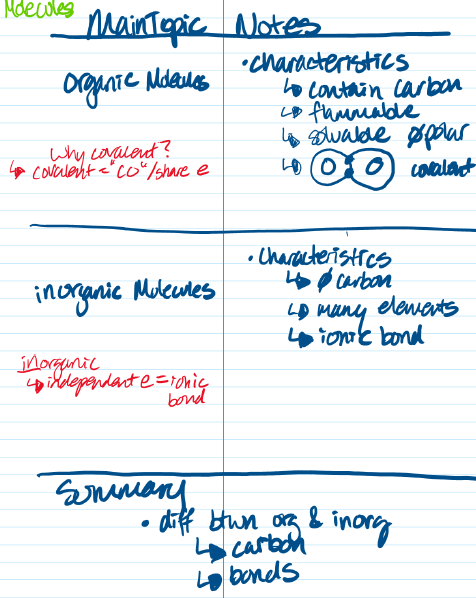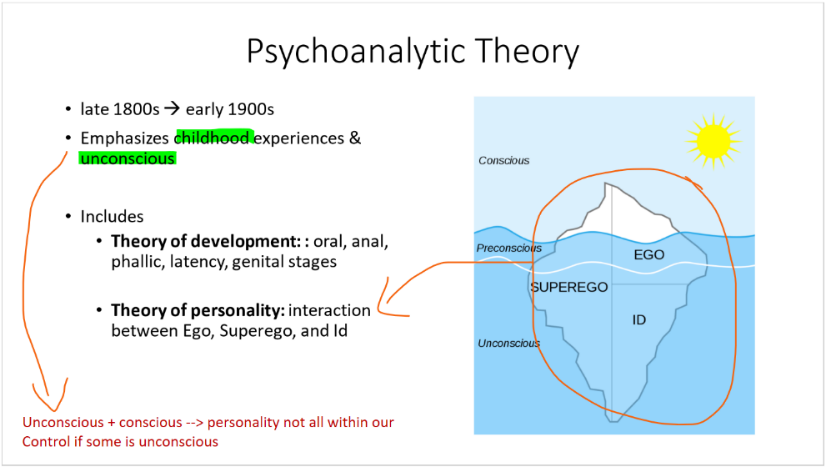You can do this method on paper or on a computer. View this video on how to create notes using this method:
Advantages
- Easily identifies main topics
- Good if you have a lot of questions or ideas you want to keep track of
- Easily organized for review/studying
- Summary section and creating review questions help you think critically
Disadvantages
- Notes section can be disorganized (try combining with outline method below)
Digital Version
Before Lecture: Briefly review slides to label main topics. If available, put learning objective into top of notes section.
During Lecture: Write questions that come up in main topic column. Use prompting questions to help guide your note taking. Add more rows if you need.
After Lecture: Summarize the lecture in your own words (at the bottom of table); add more questions in the main topic column if needed.
Reviewing for Exams: Answer the questions you had. Write in keywords and self-testing questions in main topic column. You can also cover the notes column when reviewing to check your understanding and memory of the topics. Highlight areas you need more time to understand or remember.
Example – Digital Version
|
Main Topic
|
Notes What details help me understand the learning objectives? What proves or supports the topic discussed? Learning Objectives:
|
|
Main Topic: Slide Title Questions:
|
- Paraphrase & abbreviate to make this faster - Main idea
- Draw, colour code
|
| Summary & Reminders: summarize the lecture in a few points or sentences. Write important reminders mentioned. |
Paper Version
Before Lecture:
- Divide your notes into two columns with the right column being 2/3 of the width of your page. Label the left column “Main Topic” and the right “Notes”.
- Briefly review slides to label main topics. If available, put learning objectives in the top of the notes section.
During Lecture:
- Correct or edit main topics if you need.
- Write questions that come up in main topic column.
- Write supporting information for the topic in the notes column. You can use prompting questions to help guide your note taking (i.e. what supports or helps me understand the main topic?)
- Add more rows if you need.
After Lecture:
- Summarize the lecture in your own words (at the bottom of table).
- Add more questions in the “Main Topic” column if needed.
Reviewing for Exams:
- Answer the questions you had.
- Write in key words and self-testing questions in the main topic column.
- You can cover the notes column when reviewing to check your understanding and memory of the topics. Highlight areas which you need more time to understand or remember.

Example - Slide Annotation Version (tablet or paper)
|
Lecture Summary (after lecture): how do I summarize the lecture in a few short sentences? Answers for learning objectives?
|
||
|
Questions & Cues
Before Lecture: skim and identify main topics in readings, research articles, or slides
During lecture: Write questions you have &/or definitions to review during lecture.
After lecture/when reviewing: write key words or memory cues
|

|
Learning Objectives Understand the components of Psychoanalytic theory
NOTES
What does the professor elaborate on that supports the topic or learning objective?
What is new/interesting that I should remember?
|